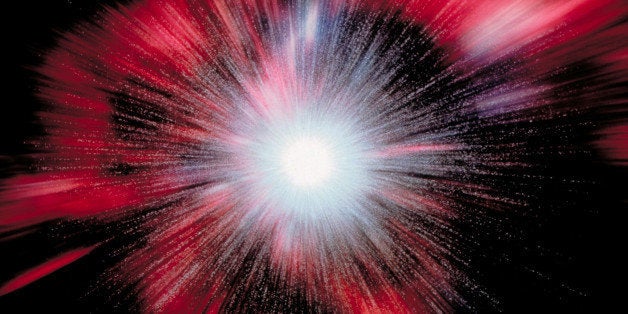
Is there a connection between Jesus' resurrection and discoveries of the past few weeks that seemingly prove the Big Bang theory?
On March 17, it was announced a telescope at the South Pole discovered, as Chao-Lin Kuo, assistant professor of physics at Stanford put it, the "bang" in the "Big Bang." What did this telescope discover? It detected gravitational waves from 380,000 years after the Big Bang. Waves confirming, conclude some scientists, the universe has been expanding, or "inflating," over the past 13.82 billion years.
There's more. Most likely this discovery confirms the "String Theory" and the notion that other universes exist all around us. "In most models, if you have inflation, then you have a multiverse," says Stanford physicist Andrei Linde.
Two billion Christians will soon celebrate Easter, marking the moment when Joseph of Arimathea, a member of the council of Jerusalem, asked Pilate for Jesus' body that was nailed to a cross. Given permission, Joseph wrapped his body in linen and sealed it in a stone tomb. Women followers of Jesus watched this unfold. When they decided to return with spices and perfumes, they discovered the stone in front of the tomb rolled away and no body inside.
Easter is called a "moveable feast" as the date actually changes. Why? In 325, the Council of Nicaea declared Easter would fall on the first Sunday after the full moon following the March equinox. Easter can therefore be celebrated on any Sunday between March 22 and April 25. The Eastern Church, using the Julian calendar, marks Easter on any Sunday between April 4 and May 8th.
Easter, in other words, is not fixed, it moves.
As a pastor for the past 20 years, I have come to realize church attenders on Easter morning -- along with wide brim hats and pink ties -- bring a wide spectrum of beliefs. As the scent of lilies wafts beneath noses and harpists pluck strings, some can affirm resurrection as a historical event. Others, must categorize it is as a myth, described as akin to, "resurrection never happened, but it always happens."
The great majority, however, wants to believe, but nurses nagging doubts. They creak open the doors of the church hoping to hear something to spark faith once again. To that group -- those who stand between staunch faith and resurrection as a myth -- I propose that events of the past few weeks hint what occurred in that Jerusalem tomb was quantum physics.
How so? Did you know particles in our universe appear and disappear? This is a mystery of quantum physics. Scientists have no idea why or where these particles go. But they dart in and out of view. Then there is "String Theory," suggesting for complex mathematical reasons reality actually has eleven dimensions, not four.
What does this mean? As Easter jumps between March to April, 2,000 years ago perhaps Jesus hopped around as well. Disappearing and re-appearing like quantum particles. Moving in and out between "String Theory" dimensions. As Brian Greene writes in The Hidden Reality, multi-universes might be "separated by enormous stretches of space or time; in others, they're hovering millimeters away."
A curious detail of resurrection accounts in the Bible is people did not immediately recognize Jesus. Jesus appears first to Mary Magdalene, but she does not recognize him. Two followers of Jesus walk with a "stranger" along a road to Emmaus, a town outside of Jerusalem, and only later as they "break bread," as the text describes, "their eyes were opened, and they saw who was before them." Then Jesus immediately vanishes. Whoosh.
In another story, Jesus appears to his disciples by the Sea of Galilee. They were fishing all night. Jesus calls from the shore, but none of his closet friends recognize him. Jesus shouts, "Friends, not having any luck?" They answer, "No." Jesus replies, "Throw your net over the right side of the boat, and your luck will change." Only then Peter recognizes him and says, "It's the Lord."
Why, after the resurrection, did none of Jesus' closest friends recognize him?
Could it be as Jesus disappeared from the tomb and then reappeared he was moving back and forth, through and within, "the membrane," as one scientist describes our quantum reality?
Could it be as the resurrected Jesus appeared before Mary Magdalene and Peter, what they did not recognize was the reflection of quasars in Jesus' eyes and stardust from the Milky Way that flecked his shoulders.
Could Jesus' resurrection be plausible in a universe governed by the mysterious and jaw-dropping reality of quantum physics?
If you believe someone or something had to light the fuse of the Big Bang, then perhaps, just perhaps, recent discoveries of a telescope in South Pole make this Easter one where your faith can be reborn.